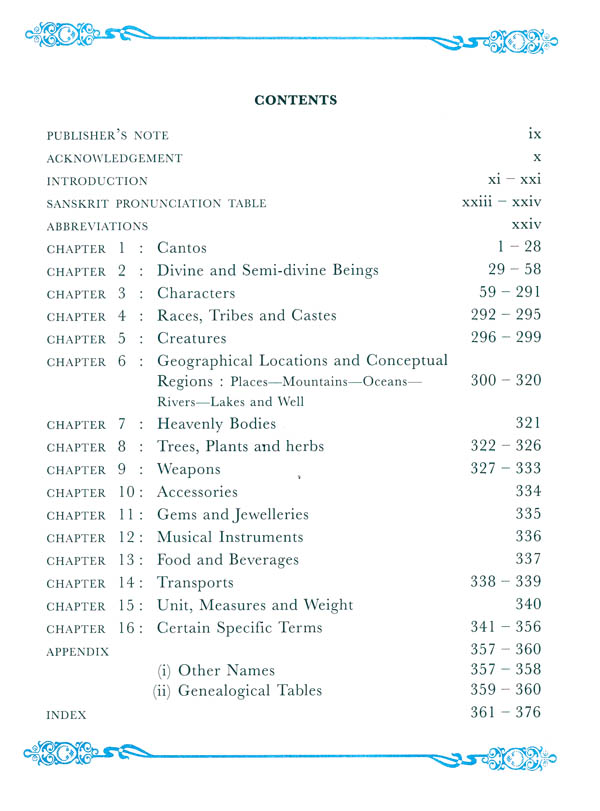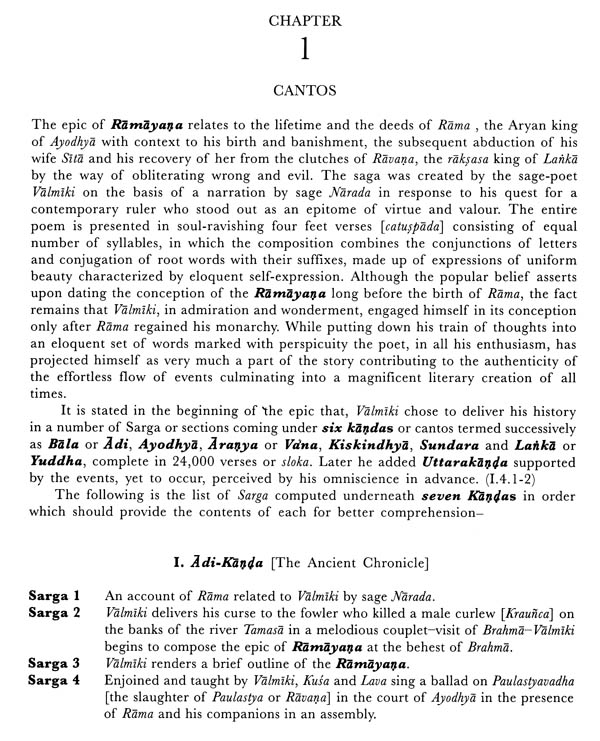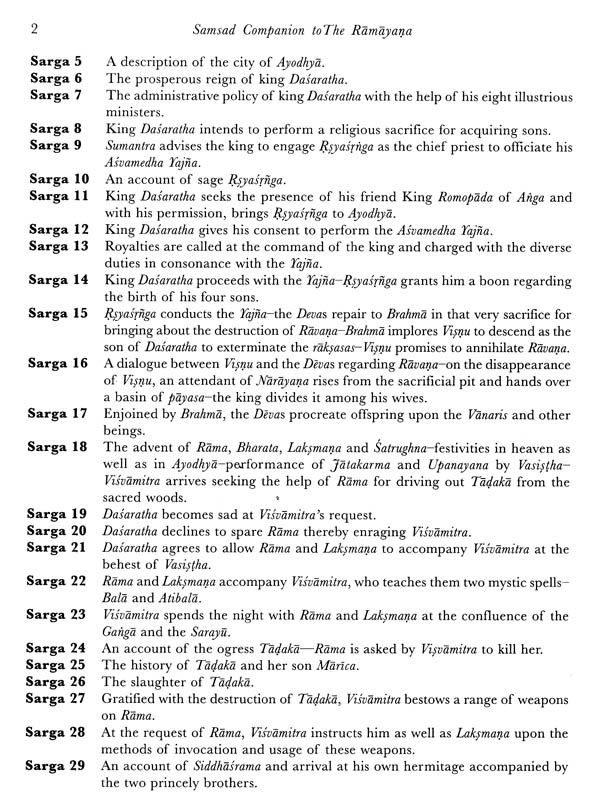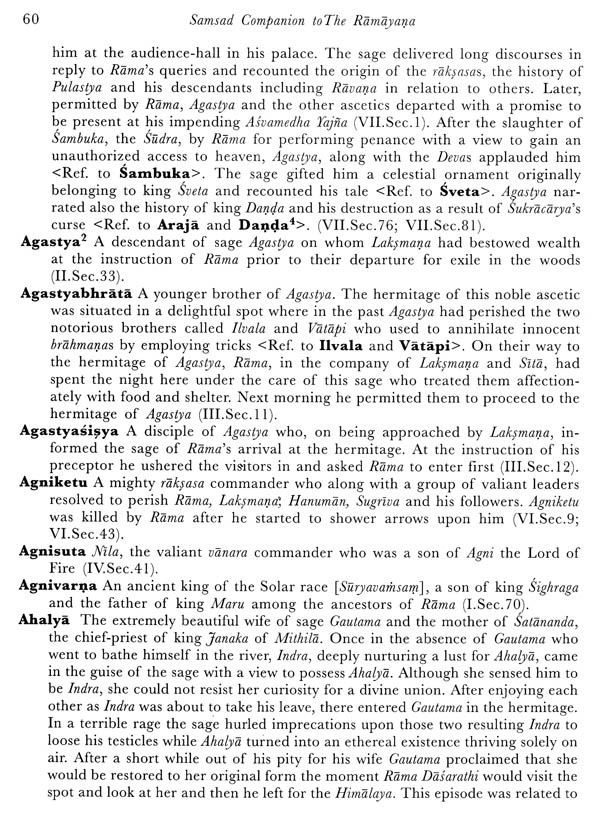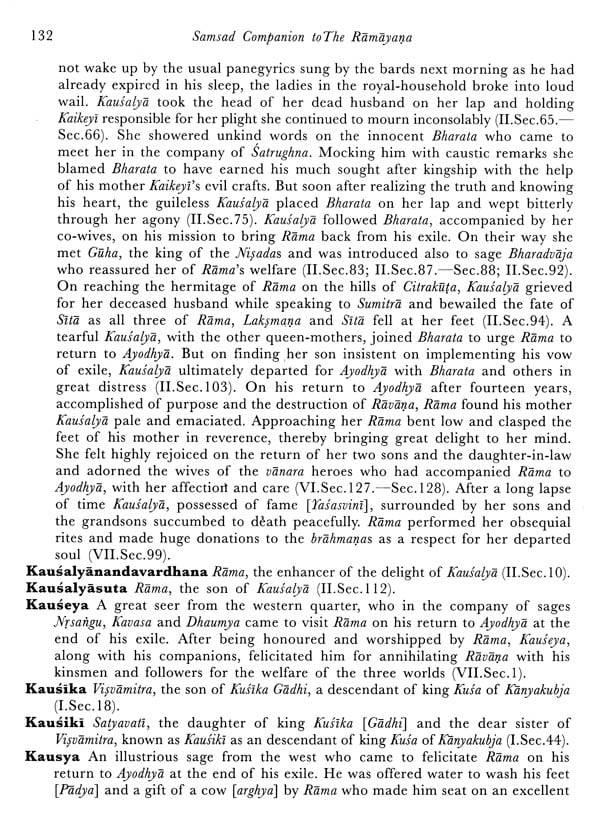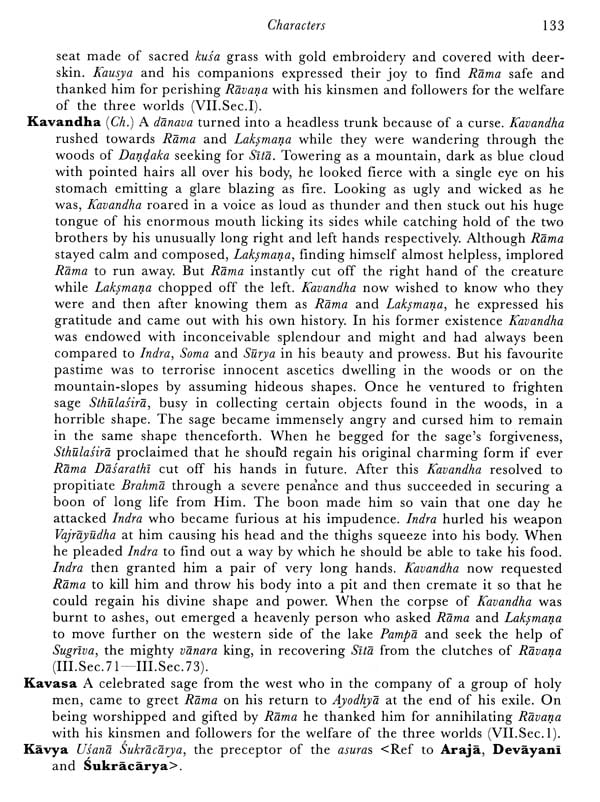
Samsad Companion To The Ramayana
Book Specification
| Item Code: | NAW875 |
| Author: | Madhusraba Dasgupta |
| Publisher: | SHISHU SAHITYA SAMSAD PVT LTD |
| Language: | English |
| Edition: | 2011 |
| ISBN: | 9788179551479 |
| Pages: | 396 |
| Cover: | HARDCOVER |
| Other Details | 11.00 X 8.50 inch |
| Weight | 1.40 kg |
Book Description
At the dawn of civilization India had evolved herself in a web of history, spirituality and religion around form and formless, self and self-less, and theism, which ultimately got textured into its two great epics-the Ramayana and the Mahabharata.
Of the two, the Ramayana, widely accepted as one of the oldest epics placed in a particular time and space, remains as a classic saga of all time that blends past with the present. With an ascention to divinity this epic finds itself as the vertribal column of Indian mind frame, by being not merely a tale of a hero regarded as the best among men. Through ages it has proved itself as the fundamental document relating to political management, wordly wisdom, human values, domestic virtue, spiritual knowledge and theosophy in its highest form. To a person, eager to grasp the very essence of Indian cultural heritage, the `Samsad Companion to the Ramayana' unfolds a classical world amalgated with mythical exuberance. A curious reader should like to use this as a source-book for research and studies to identify a galaxy of different beings and locate any reference to the Ramayana in its multiple dimensions.
Madhusraba Dasgupta, born in 1945, grew up under the guidance of her distinguished father Professor Makhanlal Roychowdhury, P.R.S., D. Litt., Shastri and took up English literature for her major and masters at Jadavpur University, Calcutta. Trained as a classical dancer and painter, her expertise extends to Interior Architecture, natural dyes, oils and also the Japanese style of wash-painting. She has written on the arts, history and culture, translated short-stories, one-act plays and poetry from Hindi and some other Indian languages through her tenure in Asia Publishing House, Mumbai. She has authored also a Bengali pioneering reverse-dictionary, 'Bhaw theke Bhasa' (Pub. 2002). `Samsad Companion to the Ramayana' stands as the second part of her project on the two great Indian epics and a complement to her first book `Samsad Companion to the Mahabharata' (Pub. 1999), a recognised reference book to the research and studies of the epic, placed in the catalogues of National and Inter-national libraries.
The term epic, a synonym for Latin epicus or Greek epikos literally meaning 'speech', denotes a long narrative recounting the life and deeds of one or more heroic figures presented in an elevated poetic form. With a body well-nourished by legends it stands at the very base of hereditary traditions and culture placed on a backdrop of a train of events. The Ramayana and the Mahabharata, the two great Indian epics, moving along the ever-sprinting flow from the vast reservoir of wisdom, knowledge, philosophy, human emotions and values, have succeeded in projecting themselves as the true bearers of social and cultural heritage of this ancient land of Bharatavarsa. They have withstood all the political and the social turmoil and tribulations to remain as the timeless synthesis of history and mythology, truth and traditions laced with morality. Through countless episodes and anecdotes these two encyclopaedias of ancient life, enjoying their continuity through the generations, have been able to carve a permanent niche in the common mind longing to quench thirst for ideas, attitudes, judgement and equanimity. Especially the Ramayana, believed to be the older of the two and widely accepted as an original creation of Valmiki, the sage-poet, around 4'h century B.C. if not earlier, has a greater impact for portraying 'an ideal civilization which humanity has yet to aspire for'. The theme revolves round the passage [ayana] of Rama, an Aryan king holding sway over the region of Kosala watered by the rivers Ganga and Yamuna. Despite being a legitimate heir to the throne of Ayodhya as the eldest son of king Dasaratha, Rama had been belied in his youth by a palace intrigue and went on a long exile with his beloved wife Sita and his younger brother Laksmana for his company. At the later part of his sojourn in the woods of Dandaka, sita, a victim of vengeance and lust, had been carried away by Ravana, the Raksasa king of Lanka. Within a period of time, with the help of the Vanaras, one of the aboriginal inhabitants of the southern part of India, Rama was able to perish the evil force by exterminating Ravana and his followers in the process of winning back Sita'. He then returned to Ayodhya and regained his kingship to establish himself as the most adorable king of all times. His life takes its own dramatic course through many twists and turns of events ending in a series of renunciation. Rama is portrayed as an image of valour and virtue tinged with selflessness, a trait that reflects itself also in his younger brothers Bharata and Laksmana who dedicated their lives for the welfare of their elder brother. But then, the final beatitude of Indian sentiment rests in renunciation. Rama, not being an ordinary persona, is superior to all other characters depicted ever in any of the other epics created in the area of world classics. He is represented as the combined excellence of the ancient monarchs and the Devas in one. This cult of extolling had always been an essential part of a repertoire of the court-bards, a practice probablyas as old the human civilization itself. In dealing with Rama, Valmiki could not resist his temptation to fawn upon while depicting him as a perfect man.
The story of Rama, as told by Valmiki in his original form of the Ramayana marked with the prefix of Adi or Valmiki, consisting of twenty-four thousand verses through seven cantos, is brought forth in two parts which could be well distinguished. The first is a simple account of human life without any touch of improbability. Beginning with the birth of a heroic prince whose succession to kingship was hampered by an exile through the evil designs of his stepmother Kaikeyi who wanted to ensure the succession of his own son Bharata. If the story had ended with the installation of his stepbrother as the ruler following their father's death it could have been a narrative based on simple historical facts. Whereas the second part with its train of events founded on the adventures of the hero, presented with the admixture of mythological elements, stimulate a sense of wonder and awe. Whether created on a historical basis or moulded by poetic imagination, probably no other epic of world literature has such a profound influence on the life and thought of people as the Ramayana. It found itself crossing over the religious, racial as well as the geographical periphery rendering solace, sustenance and strength to the worn out hearts of the South-east Asia as well as those of Asian diaspora.
Until recent times the entire Adi-Ramayana was believed to have been the homogeneous work of a single author, Valmiki. But, the critical scrutiny now claims that the original work must have passed through many stages of interpretations and developments resulting in the addition of cantos I and VII. Moreover, the verses representing Rama as an incarnation of Visnu do not seem to be very much in tune with the purely humane terms and attributes in which Valmiki has depicted him in the beginning. Rama of Valmiki is a man who is absolutely human in his actions and reactions, but a perfect man, indeed. And by the reason of this perfection he gradually got elevated to claim his divine connection as an incarnation through the later editions. The tale of Rama represents the antecedent process deeply dormant in the gathanarasamsis or the songs in praise of men. The recital of these ballads, graced by melody and metre, gradually turned out to be an indispensable part of religious ceremonies and domestic rituals. Initially the themes were confined to the royal courts, mainly dealing with the kings and the war-heroes, political intricacy and practical philosophy. But once these found their way through the mouth of the Sutas or the professional narrators, the narasamsis entered the extensive circle of populace in the form of literary creations. Valmiki might have gleaned and gathered various tales, current among the contemporary people, about the life and deeds of Rama, the great king of the Iksvaku dynasty, and had compiled them into a compact rhetorical creation. The poem gradually found its expression through the rhapsodists who memorized it to recite while wandering about the various parts of the country. Since the end of 2nd century A.D., when it is believed have reached the final stage, this fascinating tale of Rama as a superhuman being has been written and rewritten, constructed and reconstructed, translated and transcreated in most of the Asian languages.
Thus the epic, in its present form, appears to be a strange amalgam of enchanting tales and allegorical legends, which are partly historical and partly mythical, slightly hinting at the contemporary lifestyle of the aboriginals in parts of southern India, strung together with the highest human emotions and passions reflected in all rationality and animosity through trust and treachery as well as patience and impulse. Nevertheless, by being not merely a long poem relating to the time and deeds of a certain legendary hero, this epic has been able to gain profound respect and popularity exerting immense influence in proving itself as the vertebral column of Indian cultural heritage.
**Contents and Sample Pages**
